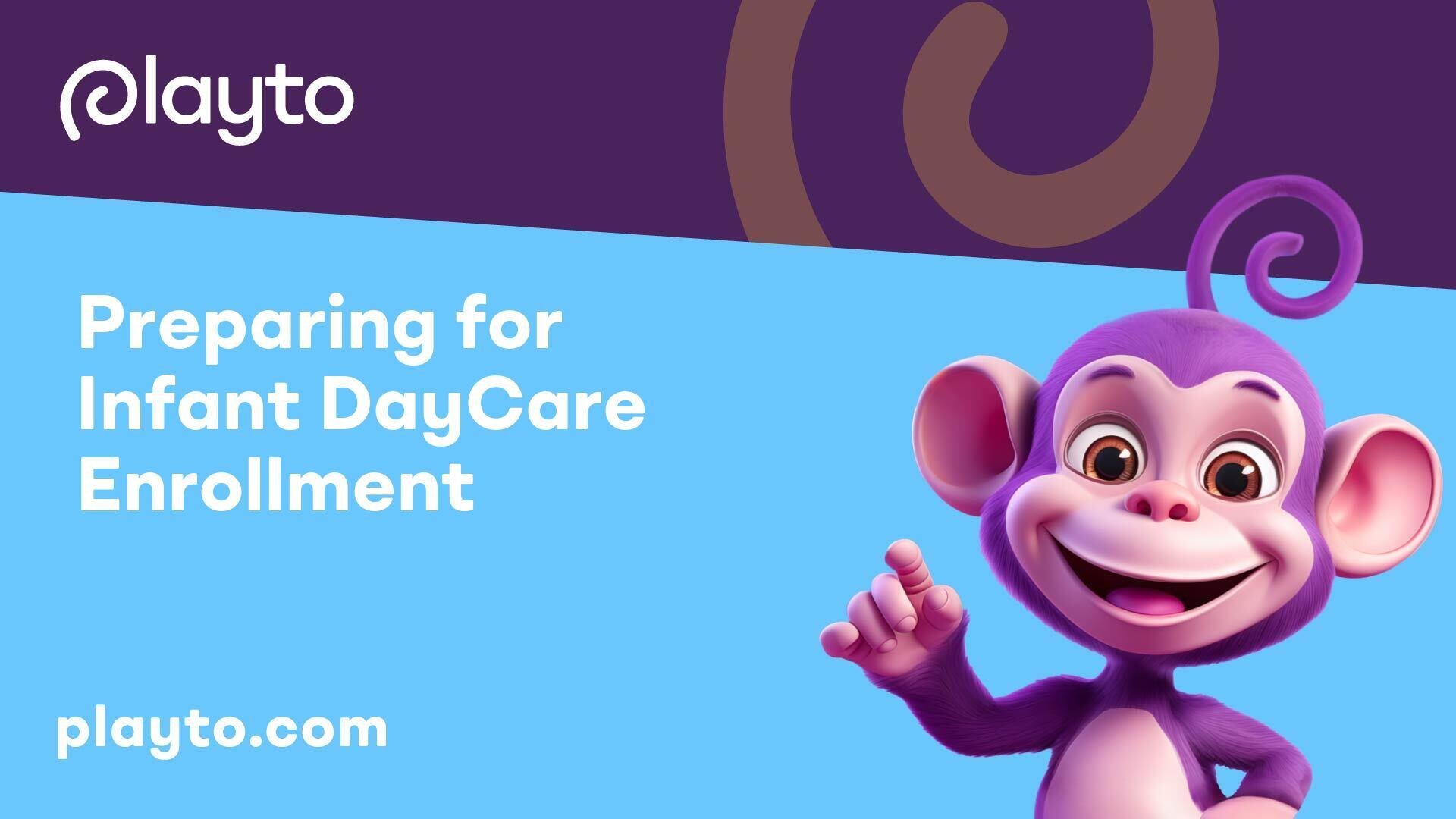
Choosing the Right Daycare
Selecting the appropriate daycare facility for your infant is a significant decision that requires careful consideration of various factors. When preparing for infant daycare enrollment, key elements to evaluate include licensing and accreditation, caregiver qualifications, and safety and cleanliness standards.
Licensing and Accreditation
Ensuring that the daycare facility is properly licensed and accredited is crucial for the well-being and development of your infant. Licensing requirements vary by state, but accreditation from reputable organizations indicates that the daycare meets high standards of care and education. By choosing a licensed and accredited daycare center, you can have confidence in the quality of care provided to your child.
Caregiver Qualifications
Another essential aspect to consider is the qualifications and training of the caregivers at the daycare. Qualified and experienced caregivers play a vital role in nurturing and supporting your infant's growth and development. Look for certifications, training in early childhood education, and a genuine passion for working with young children when assessing caregiver qualifications.
Safety and Cleanliness
Safety and cleanliness standards are non-negotiable when selecting a daycare for your infant. The daycare environment should be childproofed, with safety measures in place to prevent accidents and injuries. Additionally, maintaining high levels of cleanliness and hygiene is essential to create a healthy setting for your infant to thrive.
When evaluating daycare options, inquire about the center's cleaning practices, sanitation routines, and protocols for handling illnesses, medications, and emergencies. A clean and safe environment will contribute to your infant's overall well-being and provide you with peace of mind while your child is in daycare.
As you navigate through the process of choosing the right daycare for your infant, remember to consider additional factors such as curriculum, activities, and infant caregiver-parent collaboration. By prioritizing licensing, caregiver qualifications, and safety and cleanliness standards, you can make an informed decision that supports your infant's early development and creates a positive daycare experience for your family.

Factors to Consider for Infant Daycare
When preparing for infant daycare enrollment, several key factors should be taken into account to ensure the well-being and development of your child. These include the caregiver-to-infant ratio, feeding and sleeping routines, and communication with parents.
Caregiver-to-Infant Ratio
The caregiver-to-infant ratio is an essential factor to consider when selecting a daycare for your infant. This ratio determines the number of caregivers responsible for a certain number of infants, impacting the level of individual attention and care each child receives. According to Children Central, the caregiver-to-infant ratio plays a crucial role in providing a safe and nurturing environment for infants.
Ensuring that the daycare center maintains appropriate caregiver-to-infant ratios is vital for your child's well-being. This practice allows caregivers to attend to each infant's needs promptly and effectively, fostering a sense of security and trust. By exploring resources like understanding infant daycare ratios, parents can make informed decisions regarding the quality of care their infants will receive.
Feeding and Sleeping Routines
Another important consideration for infant daycare is the establishment of consistent feeding and sleeping routines. Infants thrive on predictability and routine, making it essential for daycare centers to follow a structured schedule that aligns with your child's home routine. Understanding how daycare centers approach feeding and nap times can help ensure a smooth transition for your infant.
Daycare centers may have specific policies and procedures regarding feeding practices, including how they introduce solid foods and accommodate breastfeeding, if applicable. Similarly, understanding the naptime schedule and environment can provide insights into how well-rested and comfortable your infant will be during their time at daycare.
Communication with Parents
Effective communication between caregivers and parents is paramount in ensuring a positive daycare experience for infants. Transparent and regular communication channels allow parents to stay informed about their child's daily activities, milestones, and any concerns that may arise. Open dialogue also enables parents to share important information about their child's needs and preferences.
By fostering a collaborative relationship with caregivers, parents can actively participate in their child's daycare experience. Platforms for infant caregiver-parent collaboration provide opportunities for sharing feedback, discussing developmental goals, and addressing any special requirements your infant may have. Stay connected with your child's caregivers to build trust and ensure continuity between the home and daycare environments.
Considering the caregiver-to-infant ratio, feeding and sleeping routines, and communication practices when selecting an infant daycare center can help you make an informed decision that prioritizes your child's safety, well-being, and developmental needs. By partnering with a daycare that aligns with your values and expectations, you can navigate the enrollment process with confidence and peace of mind.

Transitioning to Daycare
When preparing for infant daycare enrollment, the transition period plays a crucial role in ensuring a smooth adjustment for both the child and the parents. This phase involves introducing the new routine, incorporating comfort items from home, and maintaining open communication with caregivers throughout the process.
Introducing the New Routine
To help infants acclimate to the daycare environment, it's essential to gradually introduce them to the new routine. Start by establishing a consistent schedule that aligns with the daycare's timetable. This consistency can provide a sense of security for the infant as they get accustomed to the daycare's activities, such as feeding, napping, and playtime.
During the transition period, remain patient and positive. Understand that it may take time for your infant to feel comfortable in a new setting. By easing into the daycare routine gradually, you can help your little one adapt more effectively.
Comfort Items from Home
Bringing familiar comfort items from home can offer reassurance to infants during their daycare experience. Items like a favorite blanket, stuffed animal, or pacifier can provide a sense of familiarity and comfort in an unfamiliar environment. These items act as a source of security and can help soothe your infant during moments of separation anxiety.
While comfort items can be beneficial, it's important to check with the daycare center regarding any restrictions on personal belongings. Some items may need to meet specific safety guidelines or be limited in the daycare setting for health and safety reasons.
Open Communication with Caregivers
Maintaining open communication with the caregivers at the daycare center is key to a successful transition. Share relevant information about your infant's preferences, routines, and any specific needs they may have. By building a positive relationship with the caregivers, you create a supportive network that can help your infant feel more at ease in their new environment.
Regular communication with daycare staff allows you to stay informed about your infant's day, including feeding, napping, and play activities. This transparency fosters trust and collaboration between parents and caregivers, ensuring that your infant receives consistent and personalized care.
As you navigate the transition to daycare, remember that each child adapts at their own pace. By approaching the process with patience, understanding, and proactive communication, you can support your infant through this significant milestone with confidence.

Concerns and Considerations
When it comes to enrolling infants in daycare, there are several concerns and considerations that parents in New York should be mindful of before making this important decision. These factors play a significant role in ensuring the well-being and safety of infants while in daycare.
Waitlists and Availability
One common concern faced by parents in New York when enrolling infants in daycare is the issue of waitlists and availability. Daycare centers in busy metropolitan areas like New York City often have limited spots available, and the demand for quality childcare can result in extended waitlists. To secure a spot for your child, it is advisable to start the daycare search early, ideally six months in advance [2]. By planning ahead, parents can increase their chances of finding a suitable daycare that meets their needs.
Cost of Child Care
The cost of child care is another significant consideration for parents enrolling infants in daycare. Childcare expenses can vary widely based on factors such as the location of the daycare, the age of the child, and the services provided. In New York, daycare costs can be particularly high due to the region's cost of living. It is essential for parents to budget and plan accordingly to ensure that they can afford the daycare fees without compromising on the quality of care their child receives.
Illness and Exposure to Germs
Parents considering daycare for their infants may also have concerns about illness and exposure to germs in a group setting. Daycare environments, where children interact closely with each other, can increase the risk of infections spreading. It's important for daycare centers to have proper hygiene protocols in place, including regular cleaning and sanitization of the facilities. Additionally, daycare staff should be trained to recognize signs of illness and implement appropriate measures to prevent the spread of germs.
By addressing these concerns related to waitlists and availability, the cost of child care, and illness and exposure to germs, parents can make informed decisions when choosing a daycare for their infants in New York. Proper planning, research, and communication with daycare providers can help alleviate some of these worries and ensure a positive daycare experience for both parents and their infants.

Regulations for Daycare Centers
When considering enrolling your infant in daycare, it is essential to be aware of the regulations that govern daycare centers. These regulations are in place to ensure the safety and well-being of children in daycare settings. Key factors to consider include staffing requirements, child-to-staff ratios, and safety standards.
Staffing Requirements
According to the (Ohio Revised Code), a child care center must have at least two responsible adults present when seven or more children are at the center. This ensures that no child is left alone or unsupervised. Furthermore, the center should organize children into small groups for continuity of care and daily supervision.
Ensuring that there is an adequate number of qualified staff members in a daycare center is crucial for providing individualized attention and quality care to infants. Proper staffing levels help maintain a safe and nurturing environment where infants can thrive and develop.
Child-to-Staff Ratios
The maximum number of children per child care staff member and maximum group size vary based on the age category of children, as outlined by the. When different age groups are combined, the maximum number of children per staff member is determined by the age of the youngest child in the group.
In rooms where toddlers or preschool-age children are napping, specific regulations come into play. The maximum number of children per staff member during naptime may increase under certain conditions, but this ratio must not exceed specific limits and is typically limited to no more than two hours within a twenty-four-hour period.
Safety Standards
Child care centers are required to meet rigorous safety standards to ensure the well-being of children in their care. From childproofing facilities to emergency preparedness, safety is paramount in daycare settings. This includes maintaining a clean and hazard-free environment, conducting regular safety inspections, and adhering to strict guidelines for the well-being of each child.
By complying with these regulations, daycare centers aim to provide a structured and safe environment for children. These standards are in place to ensure appropriate supervision, care continuity, and safety measures are met consistently in daycare centers.
Understanding the regulations for daycare centers is crucial when choosing the right facility for your infant. By prioritizing safety, staffing requirements, and adherence to child-to-staff ratios, you can select a daycare center that provides a nurturing and secure environment for your child's early development and care.
Enrollment Process
When preparing for infant daycare enrollment, it's essential to navigate the process smoothly and efficiently to secure a place for your child. The enrollment process typically involves several steps that parents need to follow diligently to ensure that their child is placed in a suitable and reliable daycare facility.
Starting Early
One crucial piece of advice is to start the daycare search early, ideally around six months in advance. This proactive approach is particularly vital in larger cities like New York, where daycare slots tend to fill up quickly. By initiating the search process early, parents can explore various daycare options, conduct thorough research, and ultimately select a daycare facility that aligns with their preferences and requirements.
Establishing Preferences
Before commencing the daycare search, it is advisable to establish a list of preferences and expectations. Parents should consider factors such as the type of daycare facility they prefer, the proximity to their workplace or home, the size of the facility, operating hours, vacation schedules, and opportunities for their child to interact with peers. Having a clear set of preferences can streamline the selection process and help parents identify a daycare that best suits their needs.
Required Information and Paperwork
During the enrollment process, daycare facilities typically require a range of information and paperwork to complete the registration. This may include proof of the child's identity and age, such as a birth certificate, Social Security Number, or passport. Additionally, parents may need to provide contact information, details of authorized individuals for pick-up, emergency contacts, medical information, immunization records, and specific questions regarding the child's behavior, family background, and emotional expression.
It is essential for parents to gather all the necessary documents and information in advance to expedite the enrollment process. Ensuring that all paperwork is complete and accurate can help facilitate a smooth transition for both the child and the daycare facility. Personal references can also be valuable in the selection process, providing insights into the daycare's reputation and adherence to local licensing regulations and accreditation standards.
By starting the enrollment process early, establishing clear preferences, and preparing the required information and paperwork diligently, parents can navigate the daycare enrollment process with confidence and ensure that their child is enrolled in a daycare facility that meets their expectations and standards.
Sleep Considerations at Daycare
As parents prepare their infants for daycare enrollment, one significant aspect to consider is how daycare sleep patterns may impact the child's overall sleep routine. Understanding the adjustments required during this transition can help maintain healthy sleep habits for infants. Here, we explore the adjustment period, the impact on home sleep, and strategies for maintaining sleep habits.
Adjustment Period
Adapting to a new sleep environment at daycare can be a challenging transition for infants. Babies and toddlers typically take some time to adjust to napping in a different child care setting. While it may vary, some infants could adjust in a few days, while others might need a couple of months to become accustomed to the new napping routine at daycare [4]. Parents should be patient and understanding during this adjustment period, providing comfort and reassurance to ease the transition.
Impact on Home Sleep
Daycare sleep may affect nights and naps at home, as daytime sleep patterns at daycare may differ from those in a familiar environment. Initially, infants at daycare may get less daytime sleep compared to home, potentially leading to nighttime sleep challenges. It is common for daycare sleepers to become excellent nappers over time, despite the initial differences in sleep duration. Parents should be prepared for potential variations in their child's sleep routines and address any concerns with daycare providers as needed.
Maintaining Sleep Habits
Parents can take proactive steps to help infants maintain healthy sleep habits both at daycare and at home. While daycare centers may follow different schedules than those at home, parents can support good sleep by offering early bedtimes or incorporating short naps if required to aid the adjustment to the daycare routine. Even though daycare settings might not allow certain sleep aids like swaddles and white noise machines due to safety regulations, parents can explore alternative methods such as swaddle transition products to ease the transition to napping without these aids.
Despite the differences in sleep environments between daycare and home, parents can continue sleep training or nap training strategies to maintain consistency in their child's sleep routines. By employing these strategies both at home and at daycare, infants can adjust more smoothly and sustain positive sleep habits, fostering healthy sleep patterns.
Age-Appropriate Daycare Programs
When considering a daycare program for your child, it's essential to understand the specific needs and developmental stages of children based on their age. Daycare centers typically cater to different age groups, providing age-appropriate activities, care, and supervision. Here's a breakdown of daycare programs tailored to different age ranges:
Infants (0-18 months)
Infants, aged 0-18 months, are in a critical stage of development, characterized by milestones such as rolling over, crawling, and babbling. For infants, a nurturing and highly attentive environment is crucial. It is recommended to have a 1:3 child ratio, meaning one trained staff member for every three infants. This ensures that each infant receives the individualized care and attention they need.
Activities for infants in daycare may include sensory play, gentle music, and plenty of opportunities for bonding with caregivers. Daycare centers supporting breastfeeding may offer facilities and assistance for nursing mothers. Moreover, introducing infant sign language can aid in communication and language development.
Toddlers (18 months - 3 years)
Toddlers, aged 18 months to 3 years, are rapidly developing their vocabulary, motor skills, and independence. A 1:4 child ratio is ideal for toddlers in daycare settings, ensuring that each child receives adequate attention and supervision. Activities for toddlers may include interactive story time, supervised play, and mealtime routines to foster social and motor skill development.
To support your toddler's transition to daycare, providing comfort items from home can ease the adjustment period. Open communication with caregivers can also help in understanding your toddler's needs and preferences [8].
Young Children (3-5 years)
Young children, aged 3-5 years, are gaining increasing independence and developing essential skills in preparation for formal schooling. Daycare centers typically maintain a 1:6 child ratio for young children, offering a balance of structured activities and free play to enhance physical, social, and cognitive abilities. Activities for young children might include creative art projects, music sessions, and group games to promote creativity and social interaction.
Engaging young children in activities like story time, block play, and imaginative play can help in nurturing their cognitive and social skills. Providing a structured routine with ample opportunities for play and exploration is key to supporting their development.
School-aged Children (5-12 years)
School-aged children, between 5 and 12 years old, benefit from daycare programs that offer a balance of academic support, physical activities, and opportunities for personal growth. With a 1:8 child ratio, daycare centers ensure that each child receives adequate supervision and guidance. Programs for school-aged children may include homework assistance, sports activities, arts and crafts, and educational projects to cater to their diverse interests and needs.
Ensuring that school-aged children have access to a variety of enriching activities can support their academic progress, social skills, and overall well-being. Providing a safe and nurturing environment where children can thrive academically and socially is the key focus of daycare programs for this age group.
References
[1]: https://childrencentral.net/finding-daycare-for-infants/
[2]: https://www.topdaycarecenters.com/blog/what-do-you-need-to-enroll-your-child-in-daycare/
[3]: https://takingcarababies.com/
[4]: https://www.procaresoftware.com/blog/child-care-age-groups-understanding-the-differences/
